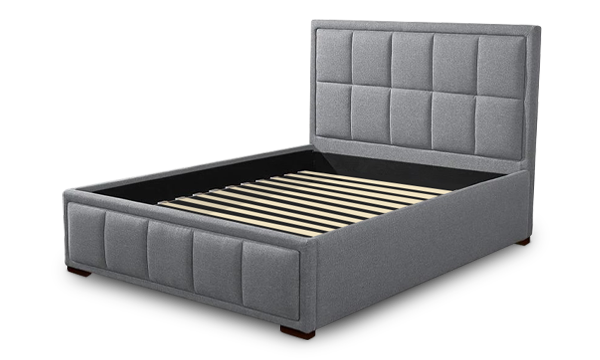In an era where technology dominates our lives, reconnecting with the Earth’s natural energies offers a refreshing path to wellness. A DIY earthing bed represents a powerful method to ground yourself, potentially improving sleep quality, reducing stress, and bolstering your health. Here’s how you can embark on creating an earthing bed, integrating the healing powers of the Earth into your nightly routine.
Understanding Earthing
- Definition: Earthing involves direct contact with the Earth’s surface electrons, which have antioxidant effects, helping to neutralize excess positive charges in the body.
- Benefits: Includes improved sleep, reduced inflammation, and increased well-being.
Materials You’ll Need for a DIY Earthing Bed
Creating a DIY earthing bed requires specific materials that facilitate a safe and effective connection to the Earth’s natural electrical energy. Here’s a detailed list of what you’ll need:
-
Conductive Material:
- Copper Wire: A long strand of insulated copper wire can serve as a durable and efficient conductor.
- Conductive Fabric: Alternatively, conductive fabrics embedded with conductive metals like silver can create a larger contact surface area.
-
Grounding Method:
- Grounding Rod: A copper grounding rod can be inserted into the Earth outside your home to establish a direct connection with the ground.
- Grounded Outlet Connection: As a more accessible option, a grounding plug designed to connect to the ground port of your electrical outlet can be used.
-
Tools and Accessories:
- Wire Cutters and Pliers: Necessary for cutting and manipulating the copper wire.
- Drill: May be needed to create a secure attachment point on a wooden bed frame.
- Multimeter: To test the conductivity and ensure your setup is properly grounded.
- Hammer or Mallet: For driving the grounding rod into the soil.
Interested in how Puffy stacks up against other brands? Check out our mattress comparisons: Puffy vs Purple, Puffy vs Nectar, Puffy vs Casper, Puffy vs Leesa, Puffy vs Saatva, Puffy vs DreamCloud, and Puffy vs Tuft and Needle.
Step-by-Step Guide to Creating Your DIY Earthing Bed
Follow these steps to create your own earthing bed and start experiencing the benefits of grounding during sleep:
-
Determine Your Grounding Method:
- Decide whether you will be using a grounding rod or a grounded outlet. The grounding rod method is more direct but requires access to an outdoor area near where you sleep.
-
Install the Grounding Rod (if applicable):
- Drive the grounding rod at least 8 feet into the Earth outside your home, as close to your sleeping area as possible, to ensure a strong connection.
-
Prepare the Conductive Layer:
- If using conductive fabric, cut it to the size of your bed or sleeping area. It should be large enough to lie on directly.
- If using copper wire, create a grid or spiral pattern that can be placed under your bedsheet. Ensure there are multiple contact points to maximize the grounding effect.
-
Secure the Connection:
- Attach one end of the copper wire or conductive fabric to your grounding method. If connecting to a grounding rod, ensure a solid connection to the rod’s surface. If using an outlet, the grounding plug should fit securely into the ground port.
-
Test for Conductivity:
- Use a multimeter to check that there is a continuous conductive path from the earthing mat or fabric to the ground. This ensures that you are effectively grounded.
-
Placement and Use:
- Place the conductive layer on your mattress, where it will have direct contact with your skin. You can cover it with a thin, natural fiber sheet to maintain comfort.
- Connect the grounding wire to your chosen grounding method each night before sleep.
-
Maintenance:
- Regularly inspect your DIY earthing bed setup for any signs of wear or damage, especially at connection points and along the wire or fabric.
The luxury and support provided by Puffy Lux Mattress perfectly complement the natural wellness benefits of earthing, making every night’s sleep a rejuvenating experience.
Incorporating a DIY earthing bed into our family’s sleep routine has been transformative. Not only have we noticed improvements in sleep quality and energy levels, but it has also been a fulfilling project that brought us closer to nature and to each other.
Check out Puffy mattress reviews from real customers and see how we compare with other brands.
FAQs on DIY Earthing Beds
-
Is it safe? Yes, when done correctly, earthing is safe. Ensure your grounding connection is secure and avoid using electrical sources during storms.
-
Can I feel the electrons? While you might not feel anything initially, many people report a sense of calmness and well-being over time.
-
How often should I ground myself? Daily grounding, especially during sleep, offers the most benefits.
Pairing your DIY earthing bed with a Puffy Lux Mattress can enhance the comfort and effectiveness of your grounding experience.
Use our store locator to find the closest furniture or mattress store near you and feel the cloudlike comfort of our Puffy Mattress in person.
Conclusion
Creating a DIY earthing bed is a simple yet profound way to enhance your health and reconnect with the Earth’s natural energies. With basic materials and a bit of effort, you can transform your sleep environment into a source of wellness and rejuvenation.
Remember, the key to a successful DIY earthing bed is ensuring a proper and safe connection to the Earth, allowing you to tap into its boundless healing potential night after night.

- Premium stitching.
- Heavy-duty wooden frame.
- Lifetime warranty.
- 101-night sleep trial.
- Free shipping and returns.












